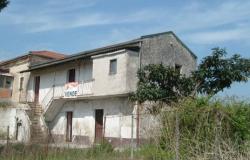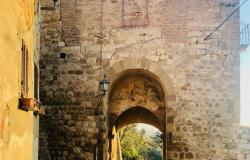Want to know how to buy a property in Italy in difficult times? Three experienced estate agents share their advice on how to choose and investment-proof property and pay the right price for it
There is no doubt that, for buyers who have cash at hand, now is a good time to buy a property in Italy. Prices are either steady or slightly dropping, and an increasing number of vendors are either pricing their properties realistically or accepting offers that are significantly lower than the asking price.
And yet, many buyers are wary of taking the leap. Some are waiting for the market to bottom out, so they can buy at the best possible price—but, unless you are a professional, it is virtually impossible to tell when the market reaches its lowest point until after it has done so. Others are worried they may lose equity in the future.
The good news is that, in this buyer’s market, it is already possible to land a bargain, and, if you choose wisely, you are likely to land a property that will hold or increase its value over time—all it takes is some careful research, a level head and insider advice from experienced agents.
How to choose an investment proof property
"Now is a good time to buy if you buy at the right price, in the right location and the right type of property," says Linda Travella of Casa Travella, who has been selling property in Italy for 21 years.
It sounds trite but location is even more important in a declining market than in a bullish one.
“You should for sure be looking in the most established areas to ensure that your investment is as safe as it can be,” explains Travella.
She suggests looking at Lake Maggiore, Lake Como, Tuscany (but, she warns, “be careful not to pay too much”), some parts of Western Liguria and also South Basilicata, close to the sea. “This is not an established area as such, but it has some bargains and is great if you don’t have a large budget,” Travella says.
Be nationality-savvy, however. Second homes in Italy draw both Italian and foreign buyers, but the two often have very different concepts of what makes a good location. The Italians, for example, are unlikely to buy anywhere too rural, preferring instead to be within easy reach of the sea, in a good village or by the ski slopes. The British, by contrast, are more prepared to accept a remote location so long as it is far from an eyesore, such as electricity pylons. A house that appeals to both types of purchasers, or to be in great demand with at least one of the two, is most likely to hold its value over time.
“My advice is not to buy anything to rural or if you do you consider a property in a luxury development, such as a ‘borgo’ in Tuscany with all the facilities and top quality finishes,” says Travella. “Buy not too far from an airport, unless the property is really special such as an apartment in an old castle or monastery.”
In second homes, she adds, views are important, so “whether it is a sea view , a lake view or a view or the mountains, it will all help.”
Views are part of what Roger Coombes of Cluttons Italy calls a property’s micro-location, which is paramount to a time-proof investment, particularly for the top end of the second home market. In other words, if you buy in Chianti but your home has a big fat electricity pylon right in front of it, it is unlikely to have great resale appeal.
“Buyers are looking for unspoilt views – so no high or medium tension electricity lines in view (low tension lines can be buried near the house), and certainly no agro-industrial buildings in sight,” Coombes explains. “They want easy vehicle access, so as little unpaved road as possible, but at the same time no busy roads in earshot. They want total privacy, so no neighbouring houses overlooking the site, but at the same time they would love to be able to walk into the village for a coffee or an aperitivo …. This is of course a description of perfection and in reality few properties can tick every imaginable box! However the more of these positive elements which are present, the greater the guarantee of the property maintaining its value over time.”
For village and town houses the priorities are different, according to Coombes. “Ideally the house will be in a quiet street on the edge of the village, so that country views can be enjoyed from the back window. From the front door, though, the piazza and the shops and bars should be only a few minutes walk away.”
The panorama only matters less if you are buying city centre apartments, which, says Travella, can be a good investment. “Whilst they may be expensive initially they can be rented to business men or students,” she explains.
If you are buying in the countryside, remember that “the sectors in biggest demand are still unrestored and restored farmhouses,” says Jane Smith of Magic Marche. “Buy in this sector to maximise your investment in five years time and to potentially enjoy some rental income in the meantime.”
Just be sure, she adds, that your property ticks some essential ‘investment-proof’ boxes: “For a farmhouse, these would be a great location, easy access road, maximum 30 minutes from the coast, village amenities within no more than 5 minutes drive, excellent views, a manageable size (no more than 300 square metres, as larger properties are less popular when you come to sell), olive trees or vines on the land and an obvious flat area for a pool.”
Wherever you buy, “it is sensible to get a property with outside space, whether it be a garden, balcony or portico,” says Travella.
And if you are purchasing a home that has already been restored, make sure the work is of good standard, and the paperwork is in order. “The buyer should always ask to have sight of the documentation relating to the planning permission and the final signing off of the finished work,” says Coombes. “If that documentation is in order, it gives strong guarantees as to the conformity to current building norms and hence to the structural solidity of the building.”
If the restoration is recent, also ask for certificates of conformity for the electrical and plumbing installations.
Spend some time preparing for a viewing and draw up with a checklist to include “some obvious points such as roof insulation and waterproofing, double glazing, air floors, heating systems, and broadband availability,” Coombes says. “For stone buildings, a good indicator of the competence of the builder who carried out the work is the quality of the external pointing—if the grouting is of a cold cement colour, un-softened by a careful choice of the colour of the sand in the mix, then look hard for other signs of slapdash or insensitive work!”
In Umbria and Southern Tuscany in particular, “the use of traditional material, stone, Senese bricks, terracotta floor and ceiling tiles, oak or chestnut roof beams and door and window fittings are all necessary indicators of a professional and sensitive restoration, which enhances the traditional characteristics of the building and contributes to the maintenance of long term value,” Coombes says.
However, the number one key to making good on your property investment lies in paying a bargain price for it in the first place, says Smith. And determining the right price, says the agents, can prove difficult.
Check back with italymag.co.uk tomorrow for advice on how to determine the right price to pay for a property.













